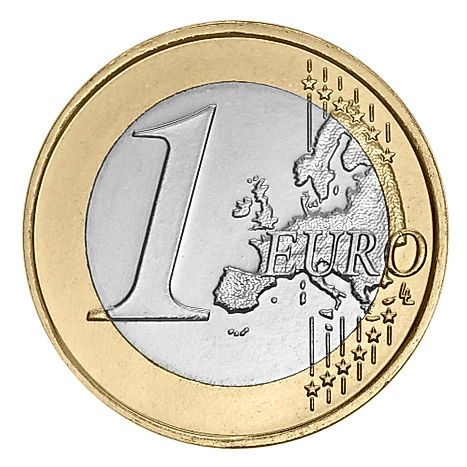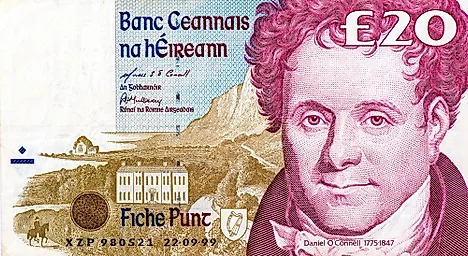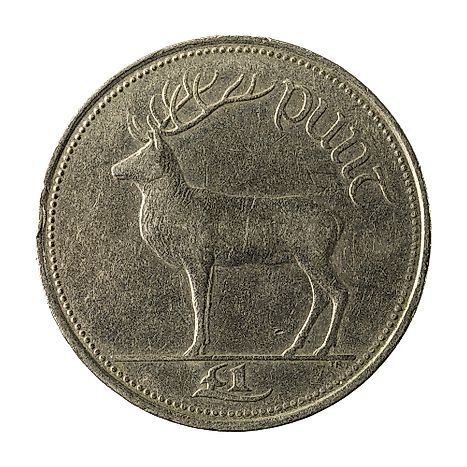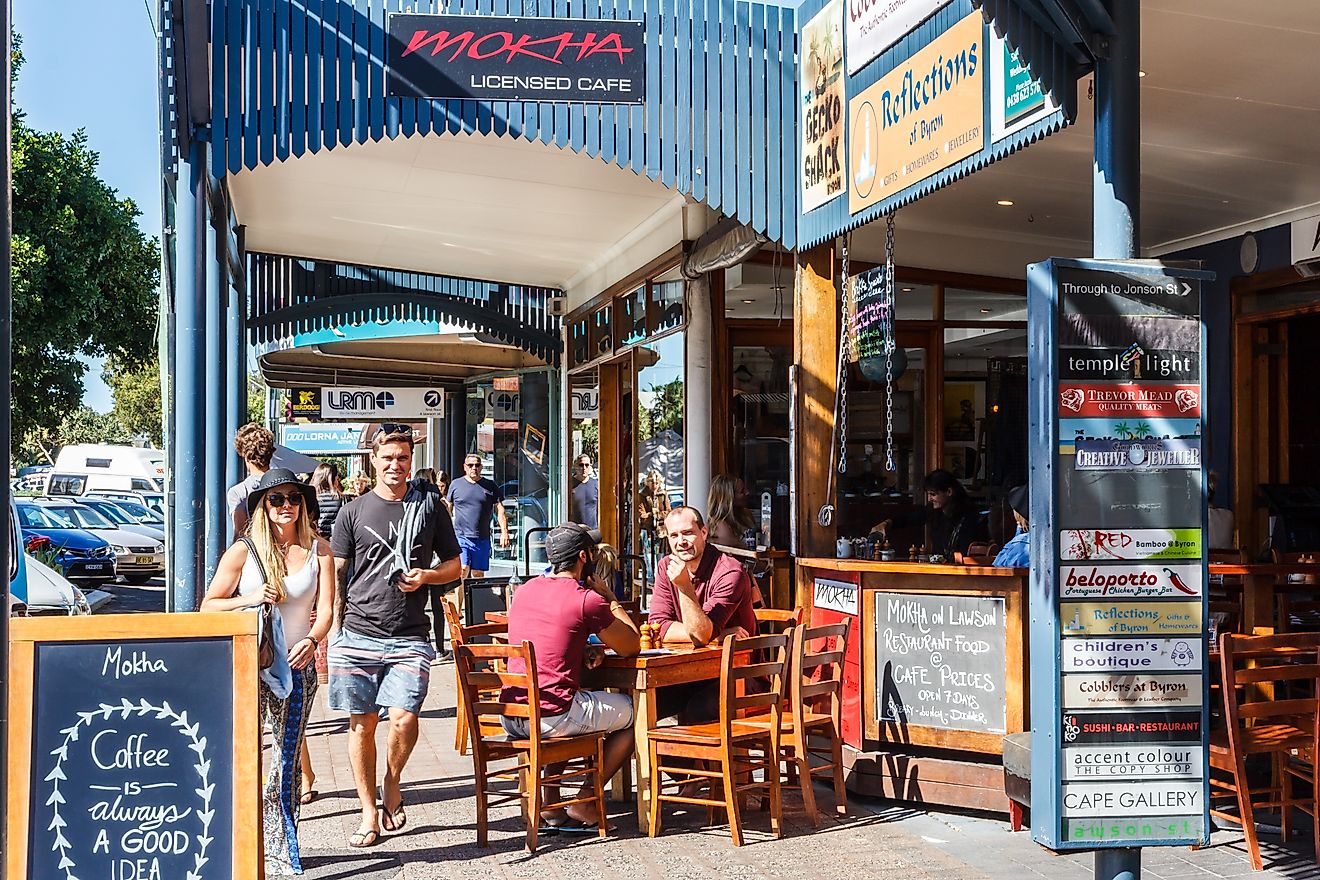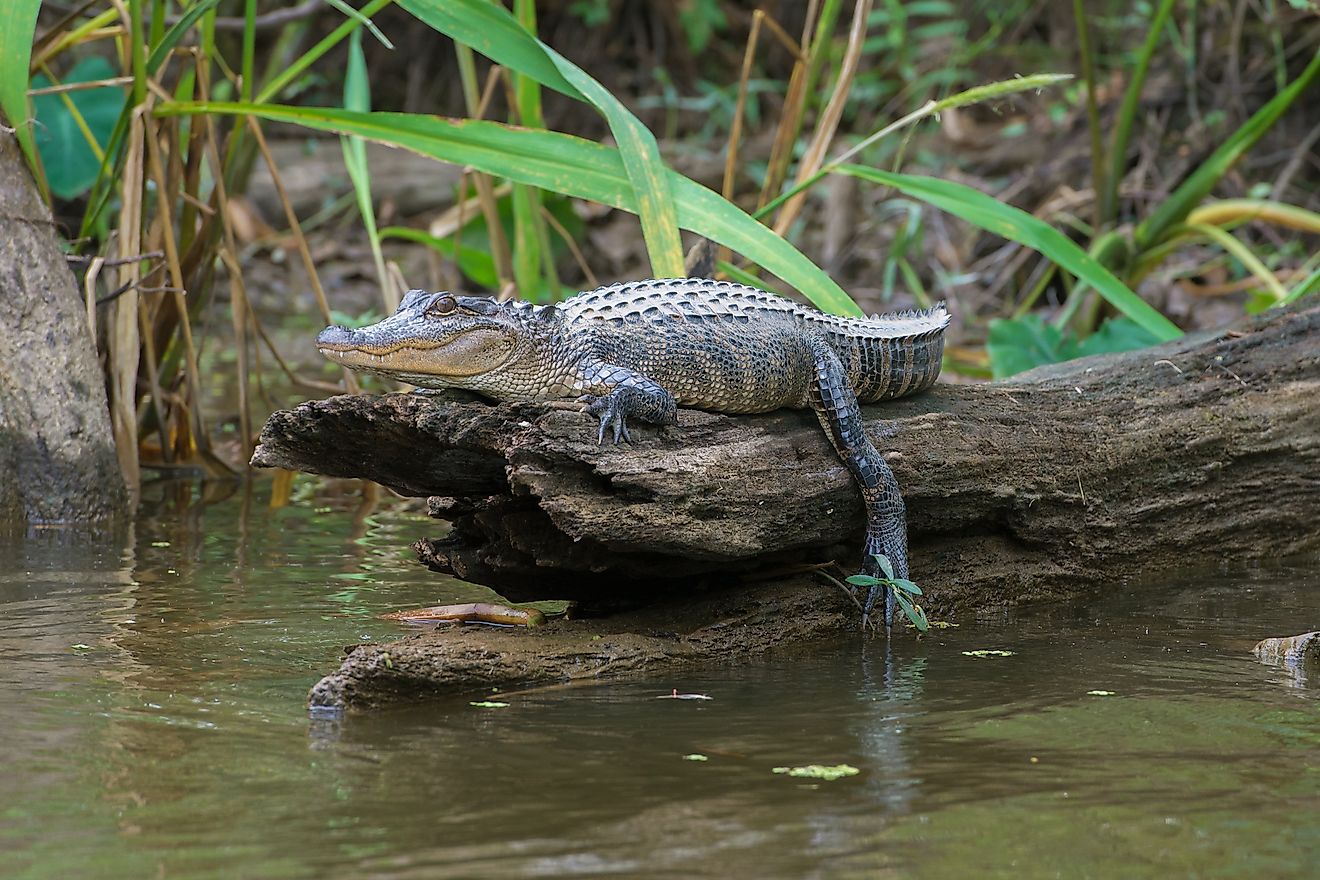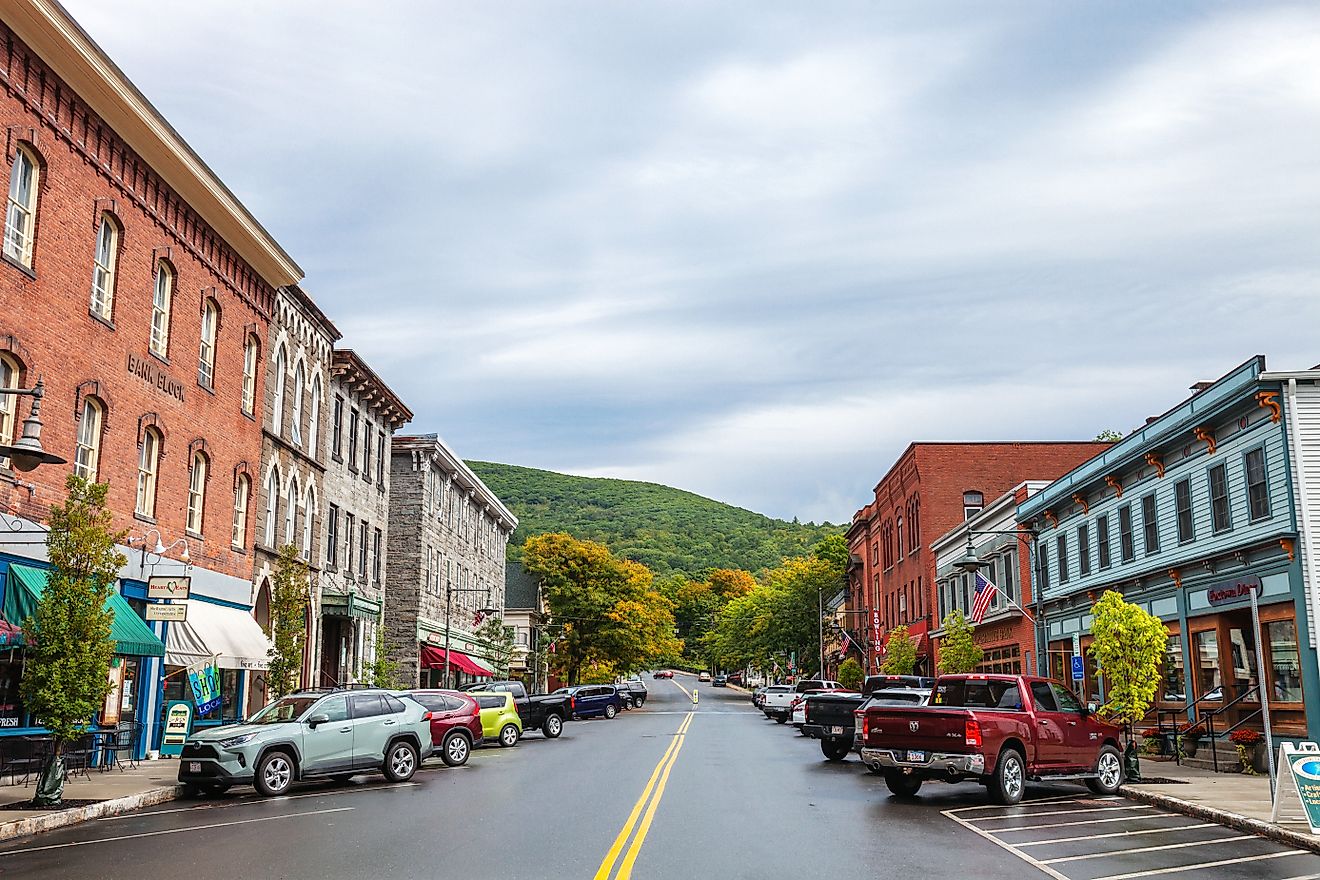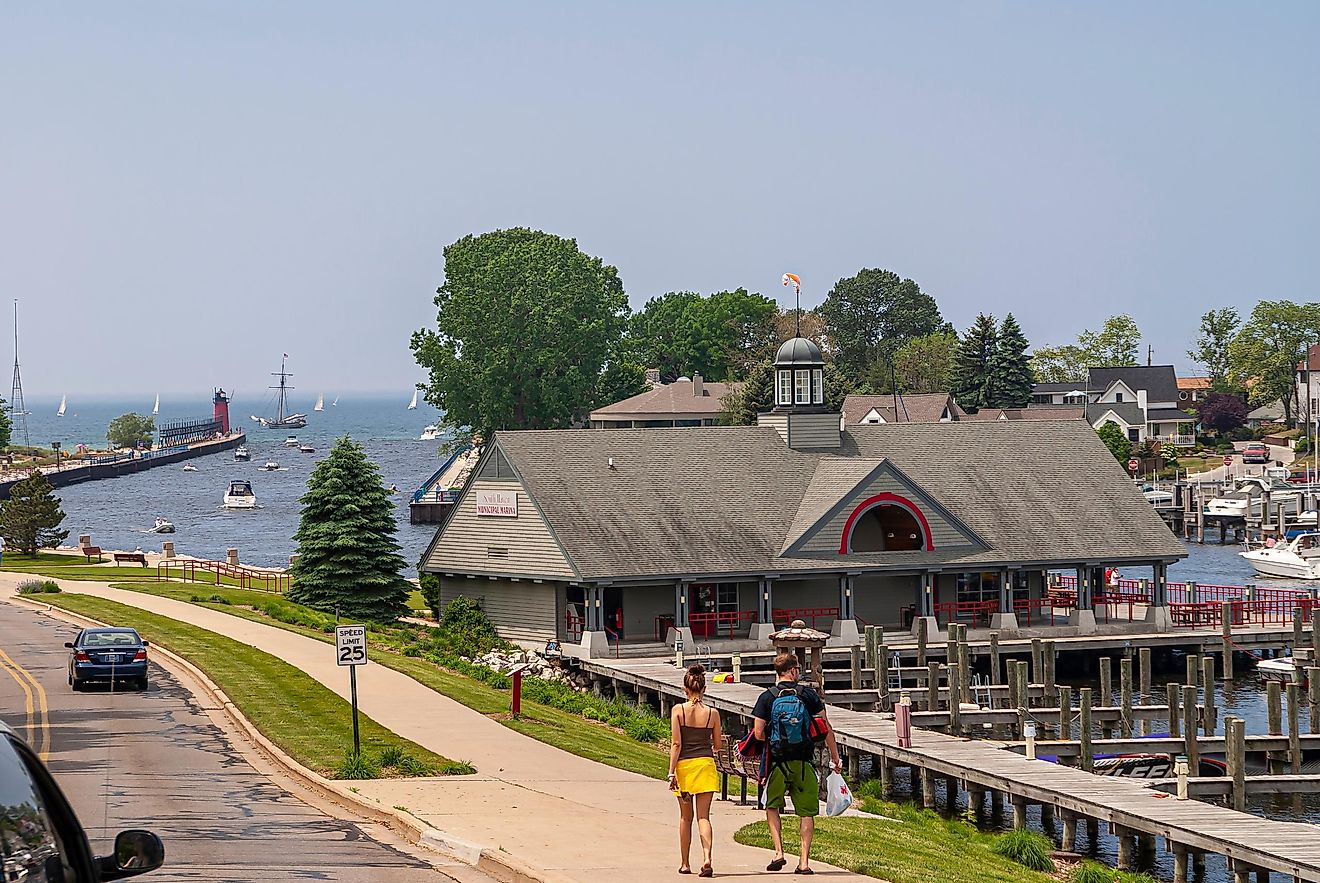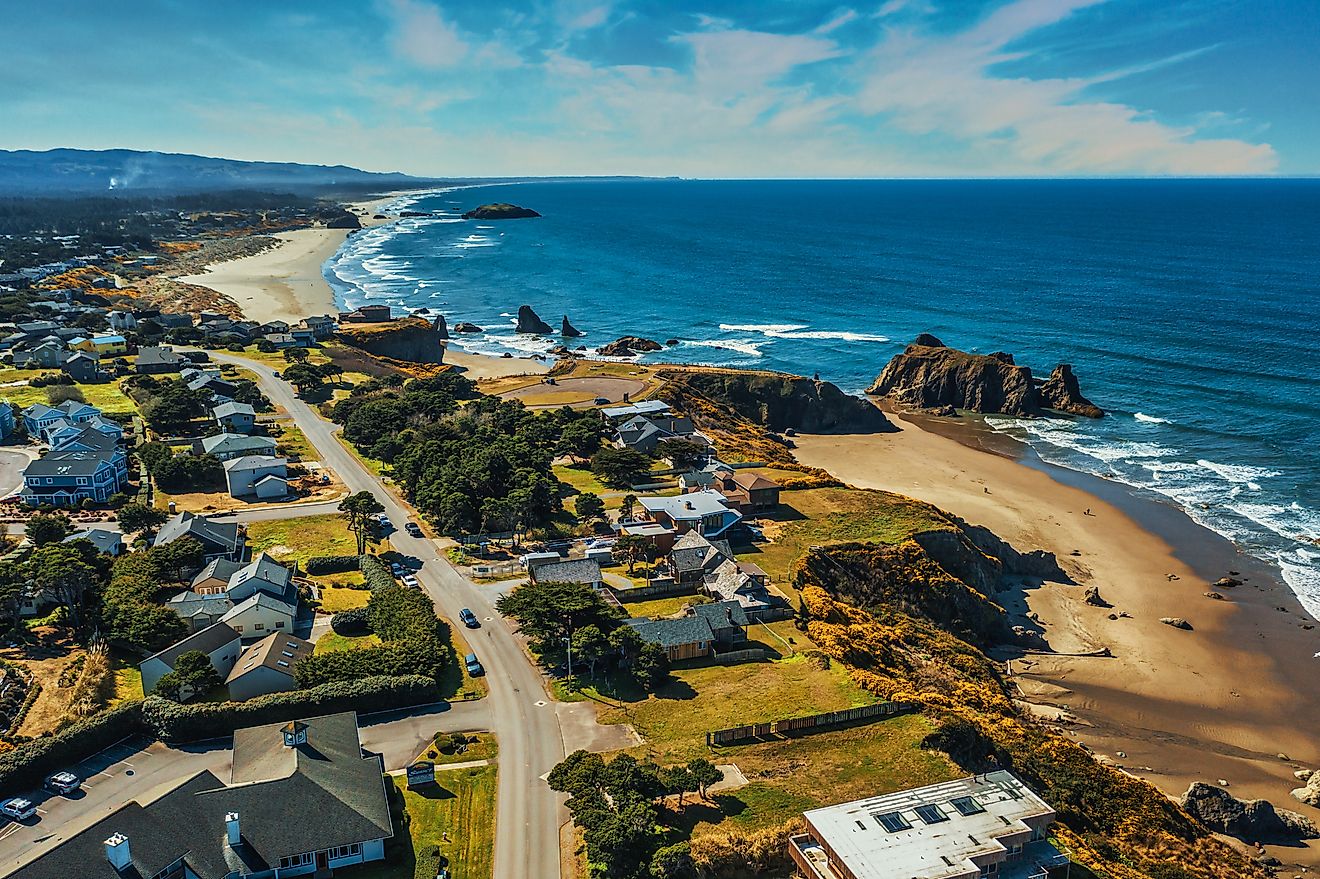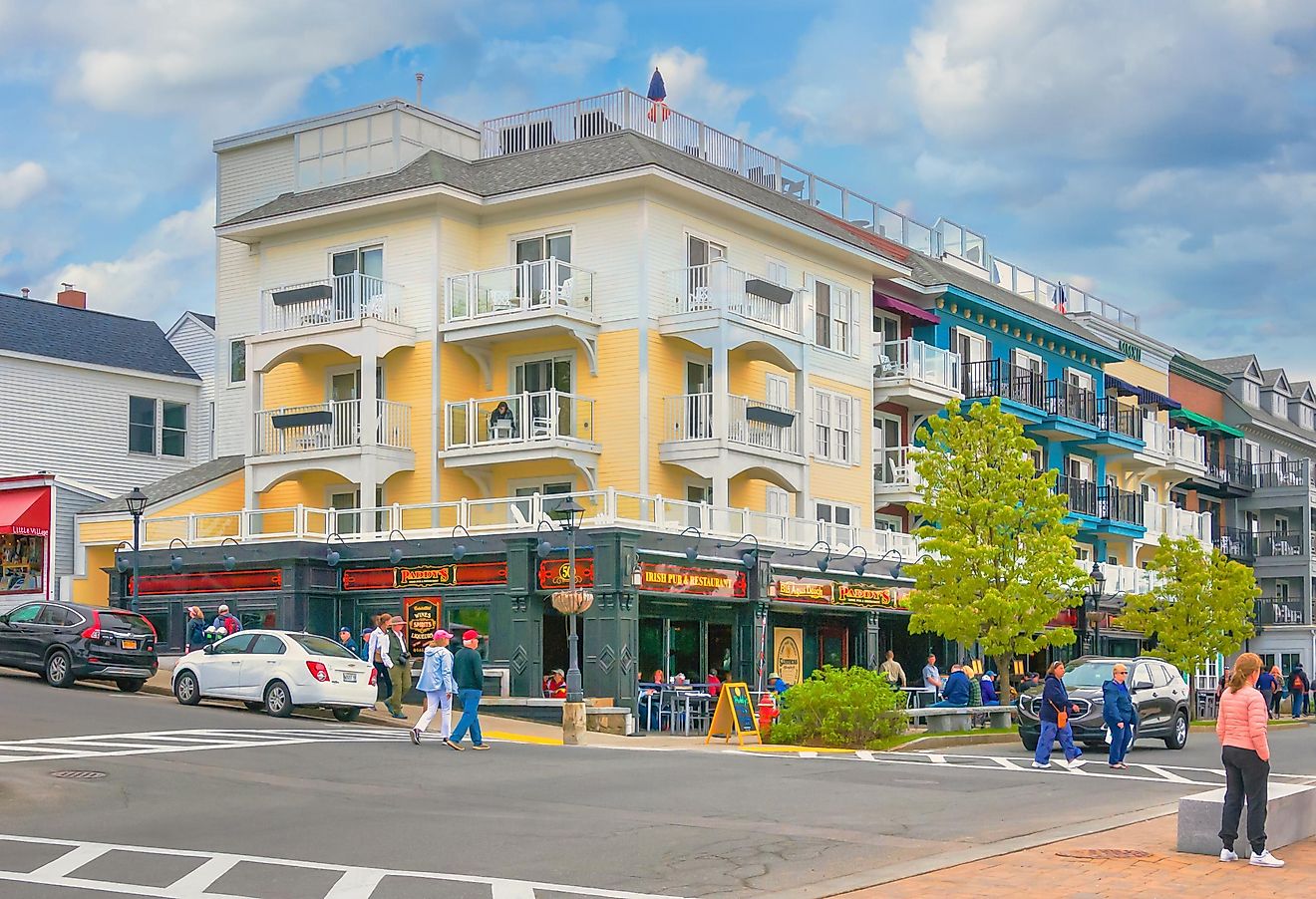Flags, Symbols, & Currencies of Ireland
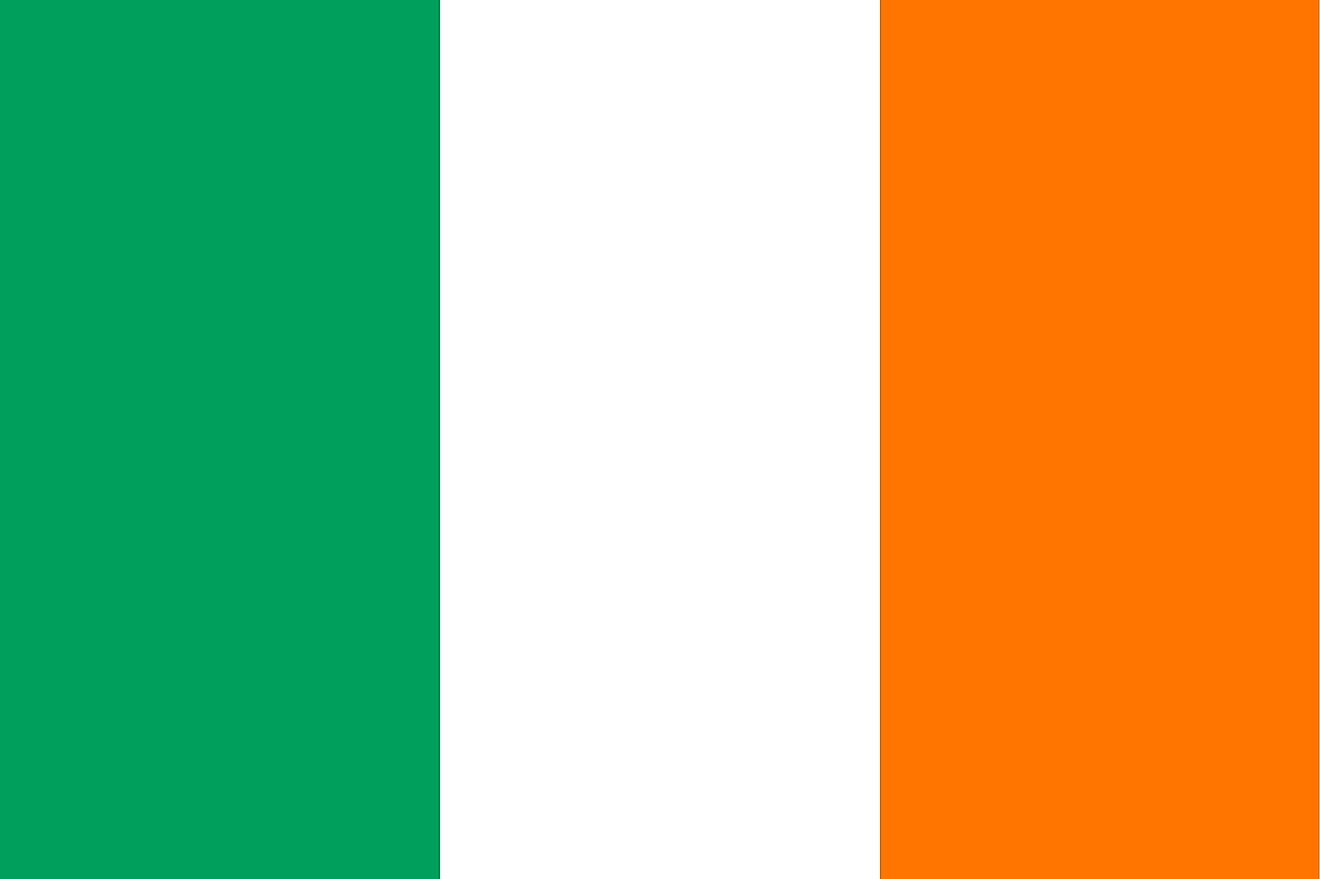
The flag of the Republic of Ireland is a tricolor flag of vertical bands of three colors: green, white, and orange. It was originally given as a gift by a group of French women to Thomas Francis Meagher, the leader of the Young Irelanders, during the Rebellion in 1848. The women were sympathetic to his mission to unite the Catholics and the Protestants who were embroiled in conflict. The flag would be adopted as the national flag of the Republic of Ireland in 1916 and given constitutional status in 1937.
The three colors on the national flag of Irelnd; green (hoist side), white, and orange, have no meaning. However, a common interpretation is that green color on the flag represents the Roman Catholics, and orange is symbolic for the Protestants while white is the color representing peace and stands between the green and orange to bridge the gap between the two as a unifying color that brings these two groups together in the interest of national harmony. The tricolor flag ultimately represents what is spelled out in the Constitution with regards to equality of every individual who calls Ireland home despite their religious affiliations, ethnic background, or political standing. It seeks to address posterity and the collective inclusion of the Protestants and the Catholics of Ireland who have not gotten along in the past.
History of the Tricolor
The French Revolution inspired and gave rise to the United Irishmen in the 1790s, whose symbol was a green flag and bore a harp. By the late 18th-century the green color had become associated primarily with the revolution. In 1795 however, there was the rise of the Orange Order selectively for Protestants who pledged allegiance to King William of Orange. Naturally, these two factions came into conflict with each other with both having separate beliefs and ideas, most notably in 1798 when the Irish Revolution saw these two groups face off due to differences in their traditions. The emergence of a nationalist regime in the mid-19th century sought to bring peace and hoped to create a nation founded on the principle of co-existence.
Symbols of Ireland
National Coat of Arms of Ireland

The harp in many forms and styles has been used on the coat of arms of Ireland since medieval times. Today it is used as the symbol of the Irish State. It is found in the seals of the President, Taoiseach, Tanaiste and Government Ministers, and is used on the back of Irish Euro coins. The coat of arm consists of a gold harp with silver string on a blue shield. It was used as the arms for the King of Ireland as early as 13th century. However, Ireland adopted the harp as its symbol upon seperation from the UK in 1922. The national coat of arms was registered as Ireland's national emblem on November 9, 1945.
National Anthem
- Anthem Title: Amhrán na bhFiann (The Soldier's Song)
- Music composer: Peadar Kearney and Patrick Heeney
- Lyricist: Peadar Kearney
- Date of Adoption: July 12, 1926
Amhrán na bhFiann (The Soldier's Song) is the national anthem of Ireland, adopted on July 12, 1926. The music was composed by Patrick Heeney and Peadar Kearney, who also wrote the lyrics. Although the song has a total of three verses, only the chorus is used as the national anthem
Amhrán na bhFiann (Irish)
Sinne Fianna Fáil
atá faoi gheall ag Éirinn,
Buíon dár slua
thar toinn do ráinig chugainn,
Faoi mhóid bheith saor
Seantír ár sinsear feasta,
Ní fhágfar faoin tíorán ná faoin tráill.
Anocht a théam sa bhearna bhaoil,
Le gean ar Ghaeil, chun báis nó saoil
Le gunna-scréach faoi lámhach na bpiléar,
Seo libh canaig amhrán na bhFiann.
The Soldier's Song
Soldiers are we,
whose lives are pledged to Ireland,
Some have come
from a land beyond the wave,
Sworn to be free,
no more our ancient sireland,
Shall shelter the despot or the slave.
Tonight we man the "bearna bhaoil",
In Erin's cause, come woe or weal,
'Mid cannons' roar and rifles' peal,
We'll chant a soldier's song.
The Currency of Ireland is the Euro
The island of Ireland uses two different currencies depending on where someone is staying or visiting. The two currencies are the Euro and the Pound Sterling. The republic of Ireland uses the Euro which is normally symbolized by € as its currency. On the other hand, the currency used in Northern Ireland is the Pound Sterling normally symbolized by £. Thus, the official currency of the Republic of Ireland is the Euro, controlled by Ireland’s Central Bank, locatedin the city of Dublin. The European Monetary Union introduced the Euro to Ireland in January 1, 1999. Three years later, the Euro became the major currency used for daily transactions of the member states. Thus, the Euro replaced the Irish pound as the national currency in the Republic of Ireland in 2002.
Banknotes and Issues
One Euro can be sub-divided into 100 cents. The Euro coins are in denominations of 50c, 20c, 10c, 5c, 2c, €1, and €2. On the other hand, the banknotes in circulation are in denominations of €5, €10, €20, €50, €100, €200, and €500. The Euros can be bought in ATM machines available in all cities, banks, or currency bureaus. The higher denomination notes such as €100, €200 and €500 are rarely accepted in retail outlets. The designs on the banknotes are symbolic and seek to promote architectural heritage of Europe. The windows and gateways on the face of every Euro banknote are outward signs of the European Union’s commitment to openness and cooperation. There’s a bridge at the back of each banknote.
Historical Currencies of Ireland
Ireland used the Irish pound as official curency before adopting the the euro in 2002. In 1701, the Irish pound was fixed against the British pound at 1 Irish pound equaling 12 English pounds. When Ireland merged with the UK to for the United Kingdom of the Great Britain and Ireland in 1801, the Irish pound continued to be used until 1826 when it was merged with the sterling pound. Ireland used sterling even after independence (in 1922) until 1928. Ireland brought own currency in 1928, naming it Saorstat (free state) pound. The name Irish pound was adopted in May 1938, five months after the Constitution of Ireland came into force.

